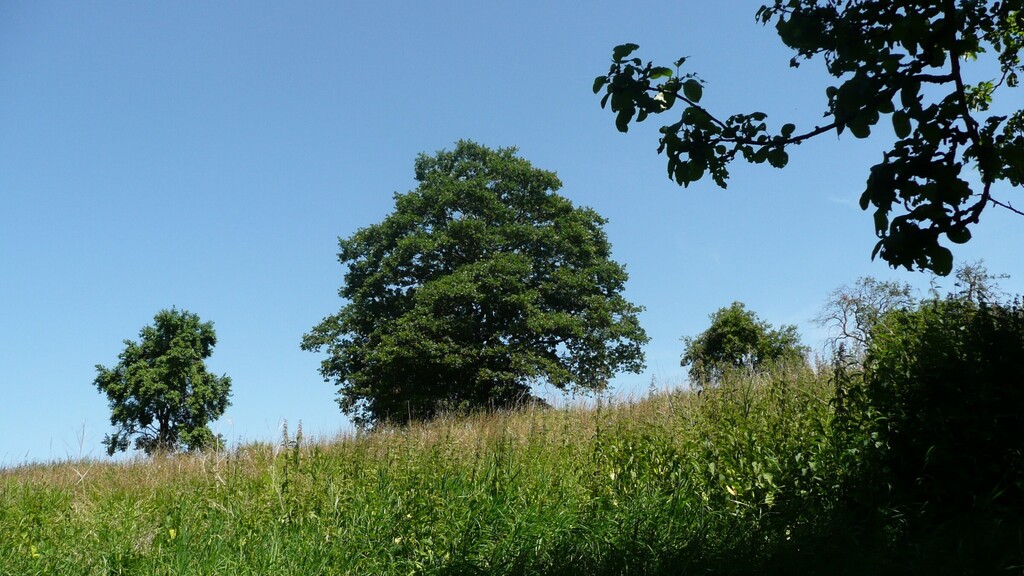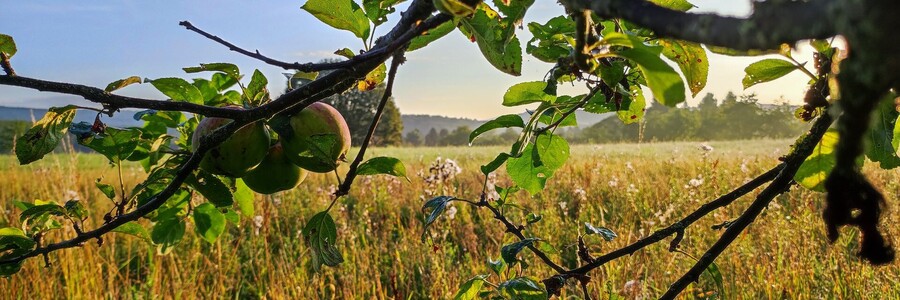Decline of orchard meadows
Orchard meadows preserve the diversity of fruit varieties, are a hotspot of biodiversity and a formative part of the cultural landscape - No wonder, then, that orchard cultivation was recognised as an intangible cultural heritage in March this year! Unfortunately, however, meadow orchards are disappearing more and more: at the federal level, the biotopes are among the habitats threatened with complete destruction and are on the "Red List of endangered biotope types in Germany". But what leads to the disappearance of the species-rich biotopes? On the one hand, the stands are destroyed by settlement expansions or road construction measures, but on the other hand, orchard meadows are also replaced by intensively used fruit crops or have to give way to the use of grassland suitable for machinery.
What happens when orchards are no longer maintained?
One of the main causes of the decline of valuable old orchard meadows, however, is that maintenance measures are often no longer carried out. The resulting consequences: The trees become overaged and stands collapse, the meadows become overgrown with bushes or, in extreme cases, even become overgrown with forest. If no maintenance is carried out in the form of pruning, the trees cast too much shade on the meadows. The result: wild bees can no longer nest in the shade, butterfly species that colonise sunny meadows disappear, as do grasshoppers, flowering meadow plants are missing and ant-eating birds such as the wryneck or the green woodpecker find too little food and leave the orchard meadows as their habitat.
You notice: The species richness of orchard meadows is promoted by the combination of grassland and open woodland habitat. Different conditions of use, gaps in the vegetation and numerous special structures provide a habitat for species with the most diverse requirements. Thus, open land dwellers and more forest-bound species as well as species with different moisture and temperature requirements can be observed in orchard meadows, which use the rich habitat offer of the orchard meadows as permanent, partial or transit habitat. Orchard meadows are therefore of immense importance for the preservation of biodiversity! If the meadows are no longer maintained, the region's biodiversity will also decline noticeably.
Mistletoe - a problem that can be controlled through care
Mistletoe is another problem that requires maintenance measures in orchards. These are semi-parasites. This means that mistletoe roots anchor themselves in the wood of other trees in order to access water and the minerals dissolved in it. Mistletoe, on the other hand, carries out photosynthesis itself via its evergreen leaves. In the event of a severe mistletoe infestation, the host tree suffers severe damage. Individual branches or even the entire tree can die, and there is also an increased susceptibility to wind and the risk of snow breakage. Mistletoe is currently spreading particularly intensively on apple trees in orchards. If the mistletoe shoots are not removed from the trees, they can multiply rapidly and thus threaten the species-rich orchard stands, because weak and older trees in particular are more heavily attacked by mistletoe.
In order to be able to continue to maintain the species-rich orchards, we need your support!
For 5€ you ensure the long-term preservation of one square metre of meadow orchard.

